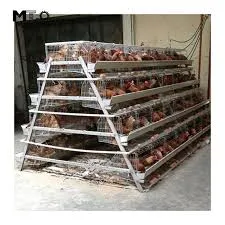cellulose-based evaporative cooling pads for enhanced air circulation and energy efficiency
Nov . 19, 2024 05:29 Back to list
cellulose-based evaporative cooling pads for enhanced air circulation and energy efficiency
The Role of Cellulose in Evaporative Cooling Pads
Evaporative cooling is a natural and energy-efficient method of cooling spaces, commonly utilized in both residential and industrial settings. At the heart of this technology are evaporative cooling pads, which play a crucial role in enhancing the efficiency of the cooling process. Among the various materials used in creating these cooling pads, cellulose stands out as a preferred choice due to its exceptional properties.
Understanding Evaporative Cooling
Evaporative cooling relies on the principle of water absorption and evaporation to lower air temperature. This technique is particularly effective in hot and dry climates where humidity levels are low. The basic function of evaporative cooling pads is to absorb water and increase the humidity of the incoming air, resulting in a significant drop in temperature. As the air passes through these pads, the water evaporates, absorbing heat and cooling the air effectively.
Cellulose A Sustainable Material
Cellulose is a natural polymer derived from plant cell walls, making it a renewable resource. The use of cellulose in evaporative cooling pads is particularly advantageous due to its high absorbency and excellent thermal properties. Cellulose fibers are capable of absorbing large volumes of water, ensuring that the cooling pads remain moist for extended periods, which enhances the cooling effect.
Moreover, cellulose is biodegradable and environmentally friendly, making it a sustainable alternative to synthetic materials. As global awareness regarding environmental conservation increases, industries are leaning toward eco-friendly solutions, and cellulose presents a viable option.
Advantages of Cellulose Evaporative Cooling Pads
1. High Absorbency The primary advantage of cellulose evaporative cooling pads is their remarkable ability to retain and distribute water. The fibrous structure of cellulose allows for a large surface area, enabling efficient moisture absorption. This property is crucial for maintaining effective cooling over prolonged periods.
cellulose evaporative cooling pad

2. Thermal Efficiency Cellulose pads facilitate efficient heat transfer due to their porous nature. When warm air passes through the moist cellulose, the heat is absorbed during the evaporation process, leading to significant cooling. This results in a comfortable indoor environment without excessive energy consumption.
3. Cost-Effectiveness Cellulose cooling pads are not only efficient but also cost-effective. They are less expensive to produce compared to synthetic alternatives, making them an economically attractive option for both manufacturers and consumers. Additionally, their disposable or biodegradable nature reduces costs associated with waste management.
4. Reduced Carbon Footprint By utilizing renewable resources, cellulose evaporative cooling pads contribute to a reduced carbon footprint. Unlike traditional air conditioning units that require electricity and release greenhouse gases, evaporative coolers with cellulose pads offer a greener cooling solution.
Applications and Future Prospects
Cellulose evaporative cooling pads are finding applications in various sectors, including agriculture, industrial facilities, and residential buildings. In agriculture, they help maintain optimal temperatures in greenhouses, thereby enhancing crop yield and quality. In industrial settings, they provide a cost-effective way to cool large spaces, improving worker comfort and productivity.
Looking toward the future, advancements in cellulose processing and technology may further enhance the performance and efficiency of evaporative cooling pads. Researchers are exploring ways to improve the durability and lifespan of cellulose pads to make them even more competitive with synthetic alternatives.
Conclusion
In summary, cellulose evaporative cooling pads offer a sustainable and efficient solution for cooling in various environments. With their high absorbency, thermal efficiency, and eco-friendly characteristics, cellulose pads present a compelling alternative to traditional cooling methods. As the world moves toward more sustainable practices, the utilization of cellulose in evaporative cooling is not only practical but also essential in combating climate change and promoting environmental well-being.
-
Hot Sale 24 & 18 Door Rabbit Cages - Premium Breeding Solutions
NewsJul.25,2025
-
Automatic Feeding Line System Pan Feeder Nipple Drinker - Anping County Yize Metal Products Co., Ltd.
NewsJul.21,2025
-
Automatic Feeding Line System Pan Feeder Nipple Drinker - Anping County Yize Metal Products Co., Ltd.
NewsJul.21,2025
-
Automatic Feeding Line System - Anping Yize | Precision & Nipple
NewsJul.21,2025
-
Automatic Feeding Line System - Anping Yize | Precision & Nipple
NewsJul.21,2025
-
Automatic Feeding Line System-Anping County Yize Metal Products Co., Ltd.|Efficient Feed Distribution&Customized Animal Farming Solutions
NewsJul.21,2025






